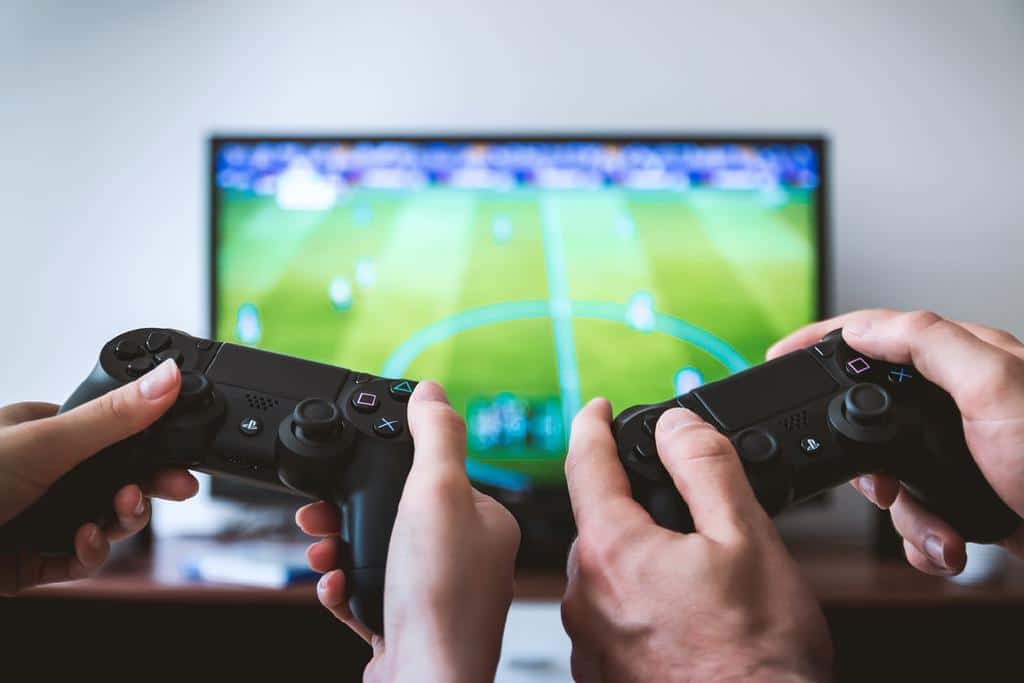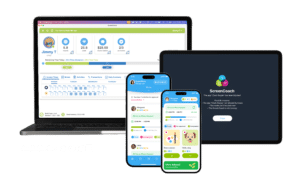
How do we know exactly how screen time is impacting on our kids and their extracurricular activities?
It’s impossible to deny that devices play an enormous role in our lives. Everywhere you look, you see someone typing away, swiping left, or plugged into some sort of device. Screen time is hard to get away from, both out of necessity and habit. We know screen time isn’t necessarily the best thing for children; we know there are guidelines and recommendations around its use.
Limiting screen time for kids
The 2015 annual statistical report for the Growing up in Australia study on Australian children cites work by Houghton et al. (2015) that explores the benefits of mobile devices, including the enhancement of learning activities and avenues for creative expression. Inevitably, games and television form an integral part of activities for children of all ages in general, with 96% of children under the age of 15 in Australia having access to the internet (Australian Bureau of Statistics, 2014), allowing them participation on social media or online gaming. However, there is also an abundance of data that looks at the detrimental effects of overuse of screen time (Caroli, Argentieri, Cardone, & Masi, 2004; Laurson, Lee, Gentile, Walsh, & Eisenmann, 2014).
Two surveys conducted by the Australian Bureau of Statistics (in 2012 and 2014) found that TV (including DVDs) time was more common than other recreational activities throughout children’s leisure time. For parents, this is concerning if we want our children to grow and develop with a sense of balance and with positive, healthy habits. Many institutions recommend placing limits on screen time usage, with the exact amount varying by age and location. In general, a maximum of 2 hours per day is recommended (including TV, gaming, homework, etc) for kids aged between 5 and 12, though children in Australian schools are recorded (72%; Houghton et al., 2015) as exceeding this limit daily on recreational activities alone. In Australia and the US, the recommendations also suggest limiting access to screens, such as keeping them out of kids’ bedrooms, as well as role modelling good habits around screen time.
The impact of screen time on extracurricular activities
While it is true that some usage of devices is dedicated to educational pursuits and some to social interaction, it is important not to equate this with other activities, such as physical activity or communication with other people.
The impact of screen time on kids will depend on varying factors, and it seems that kids’ gender is an uncertain one. Some studies say boys are more likely to exceed the 2-hour daily limit, while other studies say the same of girls. It is likely that the results depend on how screen time was measured and categorised – ie, whether it was for homework, social media, gaming, etc. Either way, the more time kids are spending on screens, the less time they are spending on other worthwhile pursuits.
We don’t look at screen time as something that needs to be eliminated completely. Rather, we believe it is something that can be optimised so that kids get what they need from their devices, while also contributing to their family and household, and participating in extracurricular activities. Children benefit from physical activity, reading, playing board games, engaging with other people, gardening, chores – all things that offer developmental benefits for children (Simoncini & Caltabiano, 2012). There are so many (age-appropriate) things to fit into a child’s day; the longer they spend staring at a screen, the more they miss out on the world around them.
Many studies have also found a correlation between the amount of screen time and health issues (Caroli et al., 2004; Fairclough, Boddy, Hackett, & Stratton, 2009; Hancox & Poulton, 2005; Laurson et al., 2014). Other studies have not found strong evidence that screen time is linked to health concerns (De Jong et al., 2013; Melkevik et al., 2010).
In general, kids spend less time on screens during the week (ie, on school days) and more on the weekends when their schedules are not so rigorous. Time on screens for tweens seemed to peak with activities such as watching TV and playing games (interestingly, similar to preschool aged children), but time spent doing homework increased with age, also.
Another useful observation is that the more screens in the home, the more time kids seem to spend watching them. This is another example of how modelling the behaviour you want to see in your children can really make a difference.
The 2015 annual statistical report for the Growing up in Australia study on Australian children found that the proportion of children that spent more than the 2-hour recommended limit on screens was significantly lower in test groups where children played team sports or participated in an art or music activity, as well as for girls who participated in individual sports (such as dance or gymnastics). Of course, there are slight variations depending on what type of screen time we are talking about (homework vs gaming vs television), but the consensus is that more physical activity means less screen time. This, in turn, means overall a more positive outcome for our kids (Simoncini & Caltabiano, 2012).
Sedentary behaviour and childhood obesity
An obvious and valid concern is the link between childhood obesity and being inactive (Caroli et al., 2004; Fairclough et al., 2009; Hancox & Poulton, 2005; Hardy, Dobbins, Denney-Wilson, Okely, & Booth, 2009; Laurson et al., 2014). It is interesting to note that the Growing up in Australia study found that tweens enjoy physical activity at an above average rate, though they still spent a fair amount of time on screens. One suggestion is that a family’s views on appropriate screen usage is a contributing factor to the amount of screen time children experience, regardless of their interest in other, more active pursuits. As parents, we have a very real responsibility and opportunity to teach our children the importance of balance, as well as the benefits of play and social activities.
The study also found that children who enjoyed their physical activities were less likely to spend more than the recommended 2 hours daily using screens because they prefer to do something else. Similarly, children who felt they were fit and had lots of energy had the same behaviour with regards to screens. This is telling us that there is hope. And that it need not necessarily be the challenge that we think it is.
While the findings are not conclusive nor exhaustive, it seems that participation in extracurricular activities can help reduce children’s allotted screen time, whether by preference or simply through purposeful scheduling. Given the increase in the use of laptops and other devices in schoolwork, it is wise to consider the ways in which at-home screen time can be managed for the wellbeing of our children.
Technology and the future
Realistically, we can’t completely remove screens from everyday life. Technology is part of the fabric of society, and our children will need to be well-versed in its use as they grow and enter further study and careers (Bavelier et al., 2010).
So, the question becomes: How can we ensure that our children’s screen time is beneficial to their development and wellbeing?
Recreation is, after all, a contributor to a person’s sense of feeling balanced and well. Educational activities are important and, in many cases, must be managed through digital platforms. Whether we stick to the 2-hour recommended daily limit or not, the key consideration must always be what benefits our children.
How can screen time be managed in such a way that allows kids to get what they need from their devices without sacrificing the crucial opportunities offered by participation in physical, social, and other alternative activities?
Sign up for ScreenCoach for $1 | Pricing Plans | Features Overview







